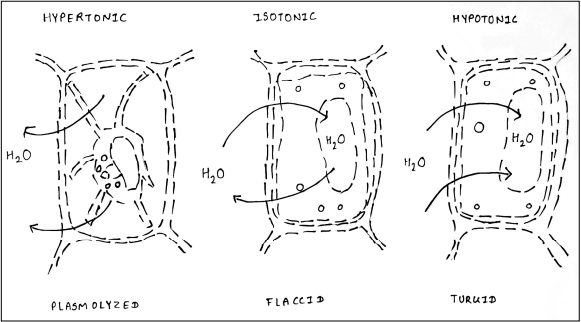Light is an electromagnetic radiation. It is form of energy that travels in the form of waves. The distance between two consecutive crests is called as wavelength. The light spectrum has rays have different wavelengths. In the electromagnetic spectrum, at one end there is gamma rays and at the other end, there is radio waves. The most important part of this spectrum is visible light, which falls on earth and support life. A narrow range of light with wavelength of 100 to 400 nm is called Ultra Violet light. The rays below the UV are called as ionizing radiation. Higher is the wavelength, lower is the penetrating power and vice versa.

The UV irradiation is used for surface sterilization of surfaces and heat labile materials. When UV light falls on the living cells it causes the production of free radicals, destabilized the biomolecules and mutate DNA. Though UV light has low penetrating power but still it is efficient in inhibiting or killing microbes. UV is also harmful for us. If we come into its contact, it may induced mutation in us and can cause skin cancer.
Principle of UV irradiation-
Irradiation of UV on microbes causes mutagenic effects where the water molecules of cell interact with the UV light and produce free radicals (-OH). These free radicals are devoid of electrons, so they attack on other cell molecules and destabilize it. The UV radiation may also cause loss of electrons from the nucleotides of DNA. UV exposure causes two thymines of DNA to fuse and form thymine dimer and causes distortion in shape of DNA (mutation). During DNA replication, a wrong base gets incorporated at dimer site and thereby hampering protein synthesis, which proves lethal for survival. And also too many thymine dimers destroy the DNA structure.
The UV absorbed by double bonds of thymine or cytosine, increases the energy of bonds. As a result they gets opened up and this provides a chance for them to link with adjacent bases. If the adjacent base is also a thymine or cytosine then it gets covalent linked and forms the dimers.
The dimers thus produced when two adjacent thymidine or cytosine residues are covalently linked by UV exposure. This results in dimer being replicated as single base and thereby causing frame shift mutation.
Materials required for UV irradiation-
- E coli culture (5 ml)
- UV lamp
- Sterile swabs
- Sterile droppers
- BHI plates
- Goggles.
The BHI plates is made by boiling heart and brain of bovine or porcine (pig) and infused along with other nutrients that support growth of microbes.
Method to prepare BHI agar plate:
| Sr. No. | Ingredients | Quantity (gm/L) |
| 1 | Calf brain | 200 |
| 2 | Beef Heart | 250 |
| 3 | Proteose peptone | 10 |
| 4 | Dextrose | 2 |
| 5 | Sodium chloride | 5 |
| 6 | Disodium phosphate | 2.5 |
| 7 | Agar | 15 |
| 8 | pH | 7.4 |
The ingredients are mixed in 1 Liter water and is autoclaved for 15 minutes at 121°C and 15lb pressure in autoclave. Once the temperature is lowered up to 40-45°C, it is poured into petri plates and allowed to solidify.
The experiment can also be performed in Nutrient Agar.
Procedure-
- Take BHI agar solidified sterile plates.
- Draw a partition line at base of petri dish with help of marker. The plate thus divided into two zones will be used for comparison as one part exposed to UV and other part as unexposed.
- With help of sterile swab spread E. coli culture evenly on the agar surface. Cover the half part of plate with lid or paper in such a way that other half part remains visible.
- On the UV lamp and expose the open part of plates at 15, 20, 35, 45, 60 and 80 seconds.
- Put the plates inverted in incubator in optimum conditions for two days and then note survival colonies after incubation.
Observation –
Number of colonies on part of plates not exposed to UV______
Number of colonies on part of plates on UV exposure__________
Conclusion-
The exposure of UV leads to decrease in number of colonies thereby indicating death of microbes. The number of death of cells is affected by the time of UV light exposure.


